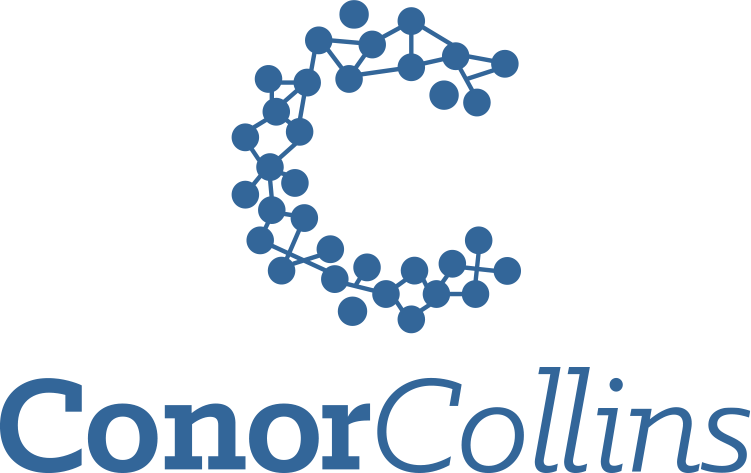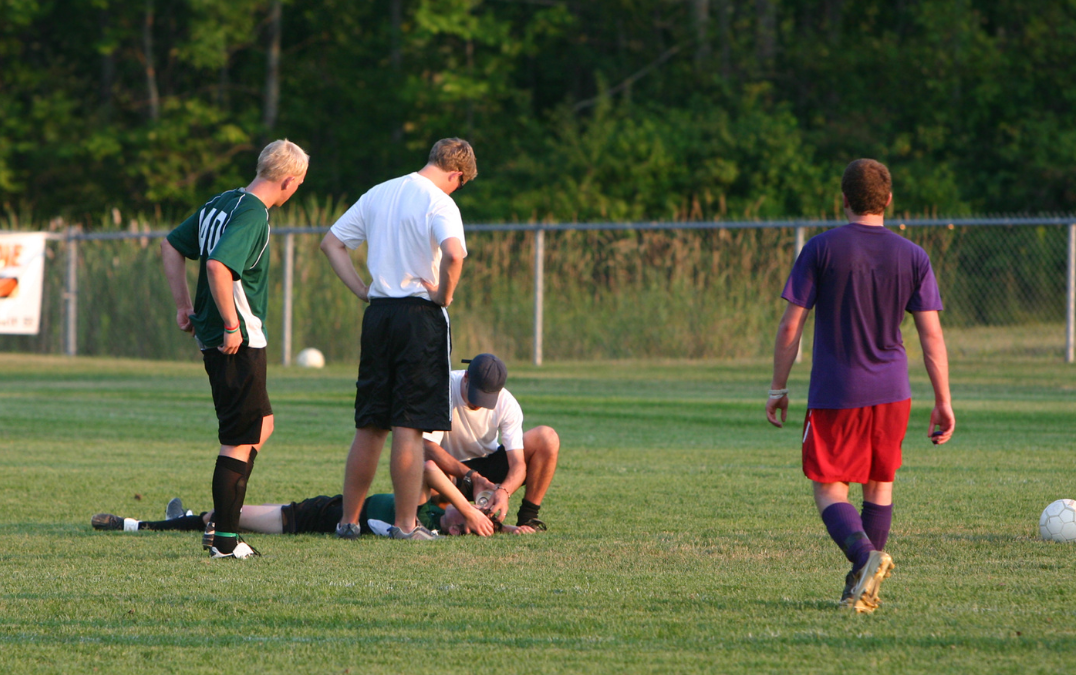I sit across from a young woman who has been struggling for months with the symptoms of post-concussion syndrome. She is frustrated and tears up as she explains how she feels lost, helpless and has received little guidance on how to get better. She’s been told to sit in a dark room, not exercise and “rest”. When her symptoms don’t get any better, she’s told to rest more and the cycle repeats itself.
I have heard this story plenty of times. As the field of concussion continues to evolve, massage therapists are becoming an integral part of the health care team managing this often complex injury. Years ago I had a very poor understanding of this injury when I began to see more concussions in practice. What I discovered is that I was not alone, the entire medical community was struggling to manage concussion symptoms appropriately. This has caused practitioners of all disciplines to learn more about the role they play in managing a concussion, whether they are a sole provider treating a person or a part of a complementary medical care team.
A concussion is defined as “any transient neurological dysfunction resulting from a biomechanical force” (Giza et al., 2014). In simplest terms, the brain gets injured at a microscopic level which can lead to a host of symptoms. The vast majority of these symptoms resolve within 30 days. A small percentage of people will have symptoms between 30-90 days (known as “post-concussive syndrome”) and an even smaller group will experience symptoms lasting over 90 days, placing them into the persistent symptom category.
As with anything overwhelming, establishing a process can help simplify things. The more thorough an exam, the more time the massage therapist will save in treatment. A thorough health history should be performed in order to identify “red flags” before beginning any physical exam. Red flags can include, but are not isolated to: persistent vertigo, resting double vision, unrelenting severe headache, persistent vomiting or continued neurological decline. These symptoms require immediate attention by a physician.
Depending on the therapist’s experience, a full neurological exam should be performed, including assessment of the central and peripheral nervous systems as well as the cranial nerves. This allows the therapist to catch discrete symptoms that might go overlooked during initial health history intake. The assumption should also be made that none of these assessments have been done by any other practitioner. In my experience, many massage therapists expect that another discipline has performed these exams which is not always the case. Approach each client with a clean slate and it will allow you to understand them more thoroughly.
Following a neurological exam, assessment of the cervical spine should be performed and include: range of motion, strength, proprioception and indicated special orthopaedic tests. Pay close attention to the symptoms felt by the client during the assessment and whether or not the evaluation re-creates any familiar symptoms. If a person has suffered a concussion, there is almost always a concurrent whiplash-associated injury. The force by which a whiplash injury occurs is substantially less than that of a concussion. If a client is coming into a clinic with a previously diagnosed concussion, it is safe to assume that they have exceeded the force required for a whiplash-associated disorder. In particular, the massage therapist should address the sub-occipital, scalene, and sternocleidomastoid muscles. Injuries to the ligaments and joint capsules of the cervical and upper thoracic spine are also very common, depending on the mechanism of injury.
The massage therapist is often asked to field a number of questions regarding concussion following treatment. This is mainly due to the frustration of the person, as well as the significant amount of misinformation being communicated about the injury. Having a baseline understanding of the current evidence surrounding concussion injuries assists the massage therapist in communicating with the person effectively. Some of these topics include appropriate rest, exercise and screen use. Gone are the days of pure rest and sitting in a dark room. The evidence is very clear that total rest beyond 48-72 hours is not favourable to recovery in concussion. In fact, cardiovascular training that is heart-rate-guided and within sub-symptom threshold has been shown to be very beneficial for the healing process (Leddy et al., 2018). With respect to screens, people may want to monitor their symptoms during screen use and limit themselves accordingly, but do not need to remove screens entirely. The most important thing during the healing process is that the person try to remain at or below their symptom threshold for the day.
Of the symptoms requiring management following a concussion, there are three that are considered a priority. It’s important for the massage therapist to understand these symptoms thoroughly and provide sound evidence-based advice to ensure clients are making appropriate progress through each stage of the injury. Sleep helps assist in breaking the acute cycle of injury, is brain-saving, and helps regulate the stress response of the autonomic nervous system following a concussion. Structured sleep hygiene practices will help manage symptoms. This is done by developing a fixed bedtime, minimizing sleep-altering substances at least 2 hours before bed (caffeine, sugar, and alcohol) and removing all electronics from the bedroom.
Regulating sleep can also help with the second priority symptom following a concussion, which is headache. The massage therapist should begin by classifying headache symptoms as there are many types of headache, some requiring its own form treatment. Many therapists assume that the majority of headaches are cervicogenic in nature. Cervicogenic headaches arise from the muscles, joints and/or ligaments of the cervical spine and are often recreated through movement of the neck, or palpation of the structures in the cervical spine. While these headaches are prominent there are also several other types of headaches commonly suffered post-concussion.
The massage therapist should have a thorough understanding of a client’s headache history to better predict outcomes following injury. For example, if a person has a prior history of migraines, they may experience an increase in frequency of migraine headache following a concussion. Tension headaches are the most common type of headache suffered during the acute phase of concussion. These headaches are driven by an imbalance in the autonomic nervous system as it tries to manage the metabolic changes occurring within the brain. Understanding that these headaches are driven by the nervous system rather than the soft tissue can help the massage therapist develop treatment plans that provide the person with relief during these periods. Lastly, medication overuse headaches are common as people struggle to manage symptoms. Overuse of medication can perpetuate symptoms without the client’s knowledge. The person seeking rehabilitative therapy should be questioned regarding the frequency of medication use. Those using medication for 15+ days out of the month should be referred to a physician to help progressively reduce medication use under medical guidance (International Headache Society, 2018).
Lastly, the development or resurgence of mood disorder is also of high importance following a concussion. Understanding a person’s mental health history prior to injury will help determine the need for a referral. Validated questionnaires can be used to help quantify often ambiguous symptoms of anxiety and/or depression. Those suffering from mental health concerns following a concussion should be referred back to a physician. While it’s important for the massage therapist to recognize when their clients need help managing their mental health, it is not within their scope of practice to manage them directly. Resources that may help manage a person’s mental health symptoms include, but are not isolated to: medication, cognitive behavioural therapy, sleep, and exercise. Those resorting to self-medicating are at increased risk of developing persistent mental health disorders and should take immediate action to avoid such an outcome.
A concussion is often a scary diagnosis to receive. As research continues, it is becoming increasingly evident that active care programs are of benefit to client progress. As is true for many medical conditions today, gone are the days of sitting and waiting. Scarier than the diagnosis itself are practitioners that provide advice to people in their care based on theory rather than evidence. As massage therapists are becoming an integral part of the collaborative management team, being at the forefront of the concussion research allows them to provide clients with the best opportunity for recovery.
References
About the Author
Conor’s Sports Injury Therapy background has earned him a growing reputation in the professional sports industry. Conor has consulted for athletes in the NHL, NCAA and IHHF and he was a therapist at the 2015 Pan AM games in Toronto.
When he’s not at the clinic, Conor’s teaching at Mohawk College in the Massage Therapy program or teaching his course “Understanding the Complexity of Concussion” internationally. Conor has written for a variety of magazine and news outlets, as well as participated as an expert at a number of internationally-recognized conferences.



Recent Comments